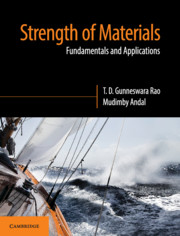Refine search
Actions for selected content:
8126 results in Fluid dynamics and solid mechanics
Preface
-
- Book:
- Aerodynamics for Engineers
- Published online:
- 12 June 2025
- Print publication:
- 12 June 2025, pp xi-xiv
-
- Chapter
- Export citation
Copyright page
-
- Book:
- Aerodynamics for Engineers
- Published online:
- 12 June 2025
- Print publication:
- 12 June 2025, pp iv-iv
-
- Chapter
- Export citation
4 - Viscous Boundary Layers
-
- Book:
- Aerodynamics for Engineers
- Published online:
- 12 June 2025
- Print publication:
- 12 June 2025, pp 185-253
-
- Chapter
- Export citation
10 - Two-Dimensional, Supersonic Flows Around Thin Airfoils
-
- Book:
- Aerodynamics for Engineers
- Published online:
- 12 June 2025
- Print publication:
- 12 June 2025, pp 630-658
-
- Chapter
- Export citation
14 - Tools for Defining the Aerodynamic Environment
-
- Book:
- Aerodynamics for Engineers
- Published online:
- 12 June 2025
- Print publication:
- 12 June 2025, pp 872-902
-
- Chapter
- Export citation
8 - Dynamics of a Compressible Flow Field
-
- Book:
- Aerodynamics for Engineers
- Published online:
- 12 June 2025
- Print publication:
- 12 June 2025, pp 504-578
-
- Chapter
- Export citation
1 - Why Study Aerodynamics?
-
- Book:
- Aerodynamics for Engineers
- Published online:
- 12 June 2025
- Print publication:
- 12 June 2025, pp 1-39
-
- Chapter
- Export citation
Appendix A - The Equations of Motion Written in Conservation Form
-
- Book:
- Aerodynamics for Engineers
- Published online:
- 12 June 2025
- Print publication:
- 12 June 2025, pp 903-908
-
- Chapter
- Export citation
Contents
-
- Book:
- Aerodynamics for Engineers
- Published online:
- 12 June 2025
- Print publication:
- 12 June 2025, pp v-x
-
- Chapter
- Export citation
Appendices
-
- Book:
- Aerodynamics for Engineers
- Published online:
- 12 June 2025
- Print publication:
- 12 June 2025, pp 903-916
-
- Chapter
- Export citation
2 - Fundamentals of Fluid Mechanics
-
- Book:
- Aerodynamics for Engineers
- Published online:
- 12 June 2025
- Print publication:
- 12 June 2025, pp 40-100
-
- Chapter
- Export citation
6 - Incompressible Flows Around Airfoils of Infinite Span
-
- Book:
- Aerodynamics for Engineers
- Published online:
- 12 June 2025
- Print publication:
- 12 June 2025, pp 331-384
-
- Chapter
- Export citation
12 - Hypersonic Flows
-
- Book:
- Aerodynamics for Engineers
- Published online:
- 12 June 2025
- Print publication:
- 12 June 2025, pp 736-804
-
- Chapter
- Export citation
7 - Incompressible Flow About Wings of Finite Span
-
- Book:
- Aerodynamics for Engineers
- Published online:
- 12 June 2025
- Print publication:
- 12 June 2025, pp 385-503
-
- Chapter
- Export citation
Reviews
-
- Book:
- Aerodynamics for Engineers
- Published online:
- 12 June 2025
- Print publication:
- 12 June 2025, pp ii-ii
-
- Chapter
- Export citation
3 - Dynamics of an Incompressible, Inviscid Flow Field
-
- Book:
- Aerodynamics for Engineers
- Published online:
- 12 June 2025
- Print publication:
- 12 June 2025, pp 101-184
-
- Chapter
- Export citation
Answers to Selected Problems
-
- Book:
- Aerodynamics for Engineers
- Published online:
- 12 June 2025
- Print publication:
- 12 June 2025, pp 917-922
-
- Chapter
- Export citation
Conversion Factors
-
- Book:
- Aerodynamics for Engineers
- Published online:
- 12 June 2025
- Print publication:
- 12 June 2025, pp 940-944
-
- Chapter
- Export citation
Credits
-
- Book:
- Aerodynamics for Engineers
- Published online:
- 12 June 2025
- Print publication:
- 12 June 2025, pp 923-931
-
- Chapter
- Export citation

Strength of Materials
- Fundamentals and Applications
-
- Published online:
- 03 June 2025
- Print publication:
- 13 August 2018
-
- Textbook
- Export citation
